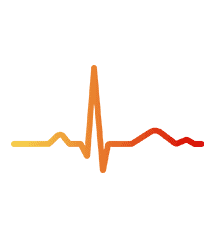Scale of energy pools used in energy physiology zones
Scale of energy pools used in energyphysiology zones
Training must focus on energy requirements.
Many forms of physical activity require rapid bursts of power during which energy requirements far exceed the body’s oxygen delivery capacity. Even with available oxygen, cellular energy transfer from aerobic reactions progresses too slowly to match energy demands. This means that rapid anaerobic energy transfer capacity determines how fast a running back plows through the line in American football, a volleyball player spikes the ball over the net, and a softball player beats out an infield hit. Even longe duration basketball, tennis, field hockey, lacrosse, ice hockey, and soccer involve sprinting, dashing, darting, and stop-and-go movements, during which the capacity to generate short bursts of anaerobic power plays an important role.
Stimulating structural and functional adaptations to improve performance in specific physical tasks remains a major objective of exercise training.
Energy production is a complicated process and it varies depending of many factors including your fitness level and genetics.
In general, there are three basic energy systems:
1) the phosphagen system (also referred to as the immediate energy system),
2) the glycolytic energy system (also referred to as the nonoxidative or anaerobic system), and
3) mitochondrial respiration (also referred to as the oxidative or aerobic system).
The Phosphagen or Immediate Energy System
The phosphagen system is active during all-out exercise that lasts about 5 to 10 seconds such as a 100-meter dash, diving, jumping, lifting a heavy weight, dashing up a flight of stairs, or any other activity that involves a maximal, short burst of power. This system relies on stored ATP and to a larger extent, creatine phosphate to provide immediate energy. For any maximal intensity exercise lasting longer than 10 seconds, assistance from other sources of energy is required.
Glycolytic Energy or Anaerobic System
The glycolytic energy system (also called glycolysis) involves the partial break down of glucose to a molecule called pyruvate. During this process, a relatively small amount of energy is produced. When oxygen demands exceed the oxygen supply, pyruvate is converted to lactate. Glycolysis is often referred to as “fast” or “anaerobic” glycolysis. Anaerobic glycolysis is a key contributor to the total energy requirements for moderate to high intensity exercise lasting about one to two minutes. Although this system can provide a rapid source of energy, it is only about half as fast as the phosphagen system.
When there is enough oxygen to meet the oxygen demands of the activity, such as during prolonged light to moderate intensity exercise, glycolysis proceeds much slower and the pyruvate that is formed participates in the formation of additional energy via aerobic processes- “slow glycolysis”.
During exercise there are four major endogenous sources of energy: muscle carbohydrate stores (glycogen), blood sugar, blood fatty acids, and intramuscular triacylglycerols.
The Aerobic System
The aerobic system accesses a massive store of virtually unlimited energy. The aerobic system produces far more ATP than either of the other energy systems but it produces the ATP much more slowly, therefore it cannot fuel intense exercise that demands the fast production of ATP.
Aerobic exercise includes any type of exercise, typically those performed at moderate levels of intensity for extended periods of time, that maintains an increased heart rate. In such exercise, oxygen is used to “burn” fats and glucose in order to produce adenosine triphosphate, the basic energy carrier for all cells.
During aerobic exercise your body must supply fuel for working muscles. Your heart beats faster and your lungs breathe deeper to deliver oxygen through your small blood vessels to muscles.
Aerobic exercise reduce the risk of many conditions, including obesity, heart disease, high blood pressure, obstructive pulmonary disease, type II diabetes, metabolic syndrome, stroke and certain types of cancer. Weight-bearing aerobic exercises (walking) help decrease the risk of osteoporosis.
Two major goals of aerobic training include:
1. Enhance central circulatory capacity to deliver oxygen
2. Increase active muscles capacity to consume oxygen
The Anaerobic System
Anaerobic means “without oxygen”. That means that our body produces energy for exercise without oxygen (it supplies energy few seconds to two minutes) . Anaerobic endurance refers to the ability to sustain intense, short duration activity such as weight lifting or sprinting.
There is two Anaerobic Energy Systems :
1. Alactic Anaerobic System – it has high-energy phosphates, creatine-phosphate and ATP (this system powers activities that takes 30 seconds or less
2. Lactic Anaerobic System which features anaerobic glycolysis and it’s dominate in “longer” activities (not longer than 2 minutes).
Anaerobic glycolysis exclusively uses glucose (and glycogen) as a fuel in the absence of oxygen, or more specifically when ATP is needed at rates that exceed those provided by aerobic metabolism.
While aerobic exercise relies on oxygen, anaerobic exercise is fueled by energy stored in your muscles through a process called glycolysis. Glycolysis is a method by which glycogen is broken down into glucose, also known as “sugar” and is converted into energy. Glycolysis occurs in muscle cells during anaerobic exercise without the use of oxygen in order to produce energy quickly, thus producing lactic acid, which causes your muscles to fatigue.
Lactic acid is a by-product of glycolysis and forms when your body breaks down glucose for energy when oxygen is low. Participation in regular anaerobic exercise will help your body tolerate and eliminate lactic acid more efficiently.
As the intensity of exercise increases, the muscles begin to need more energy than aerobic metabolism can produce. This is called the metabolic threshold. At that point the anaerobic system begins to release more energy to the muscles. However, the anaerobic systems waste products can lead to fatigue. Professional athletes know how to leverage this “muscle burn” during trainig to increase power and endurance and that gives them that “final kick” during competition.
1. Warm up – energy zone between resting HR and recovery zone, primary goal is to bring our body to targeting temperature and blood flow.
2. Recovery – energy zone right before aerobic section, also very useful as a cool down section.
3. EN1 – the first and most useful aerobic zone to develop, stimulate and sustain aerobic aparatus.
Our body is using fat for energy during workout in this zone. EN1 energy zone is the best zone to burn fat (workout must be 45min+).
4. EN2 – the second aerobic zone, which can be also used as a fat burner (workout 30min+). This zone holds control over progressive and regressive workouts.
In EN2 our body is using primarily fat followed by carbohydrate for energy.
5. EN3 – the best zone if we consider the ratio of the training speed,the consumption of muscle energy and the stimulation of muscular system. (Race Pace)
Our body in this zone begins to use more carbohydrate than fat for energy.
6. VO2 max – (peak oxygen, maximal aerobic capacity) is the maximum rate of oxygen consumption measured during incremental exercise, that is exercise of increasing intensity.
7. LT – here you are deep in the intensive zone and muscles contract without presence of oxygen.The training speed is stimulative enough, but the energy consumption is at a very high level.
Our body is using mostly carbohydrate.
8. Lmax – this zone consumes by far the most energy of all the available systems and does the most damage to the body.
Our body is using carbohydrate almost entirely as its energy source and pure ATP.



